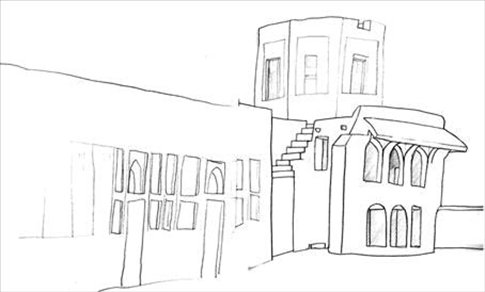
We took the students drawing at Lahore Fort. This rambling array of palaces, courtyards, bath houses and mosques set in 42 acres of gardens seemed ideal for teaching perspective, and getting students out of the sterility of the basement drawing room at BNU.
It worked. Some of them, despite a lifetime in Lahore, had never visited, or could only recall it from another school trip as a seven year old. I found this strange. Not only is the place full of treasures, but the lawns are covered with families having picnics and sitting in the shade of enormous trees. Later in the day the Pakistan National under 19 cricket team came to practice in the grounds. They are off to Australia soon, they said proudly, on discovering my nationality.
Unlike the palaces in Bahawalpur the buildings are in poor condition. Almost all the frescoes have gone and a thin patina of graffiti spreads across the walls. Sections awaiting repair are fenced from the public and only visible, intriguingly, across moats and through shattered arches.
Which is to say the place is both sadder and more mysterious for its neglect. The age of emperors has passed, and children now play in the former perfumed gardens.
In the centre of the complex stands a small white marble mosque. The inlay of pietra dura has mostly disappeared but the scalloped arches and bulging domes of the roof are perfectly intact despite centuries of wear. The students sit on its cool tiled floor and draw and marvel at the beautiful things before them.
Standing on the ramparts of the fort you can see the old city crushing in, the random shapes of its buildings pushing up and out against the sky. In the former parade ground below a circle gathers to watch a local wrestling match. Everywhere are hawkers, and the thin tune of the ice cream vendor floats up on the breeze.